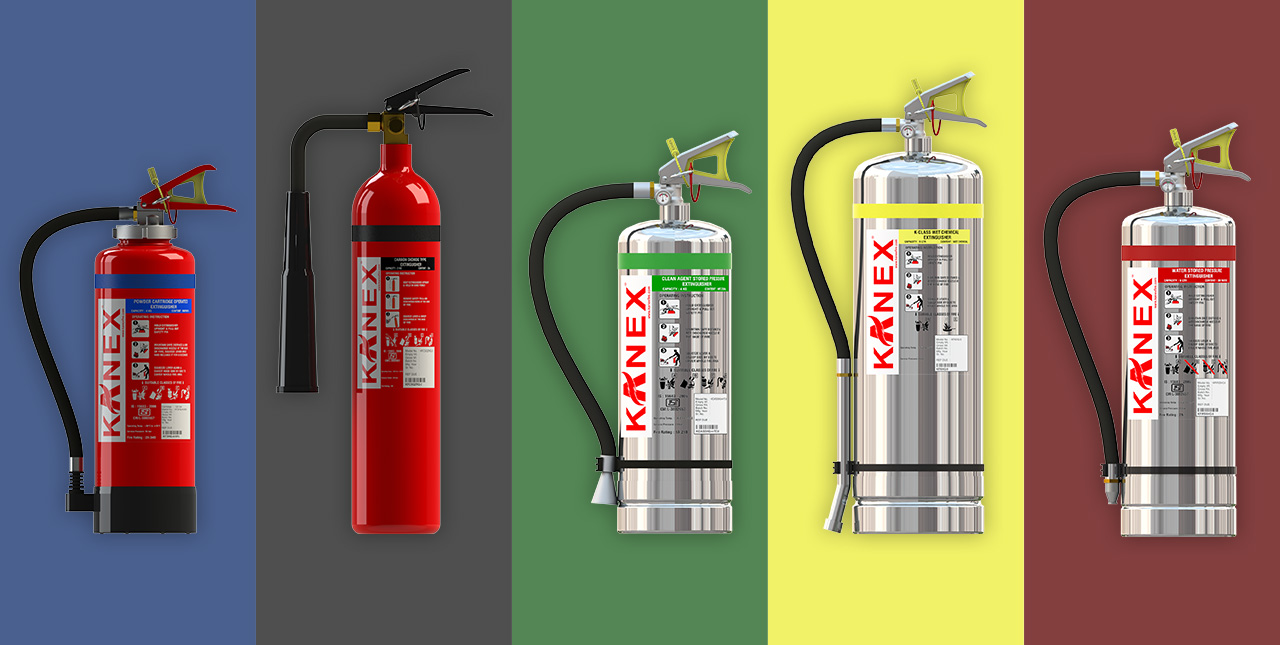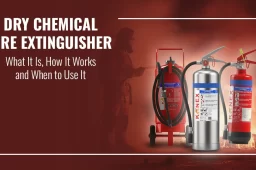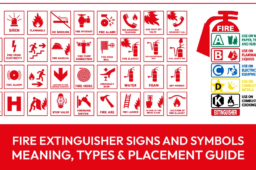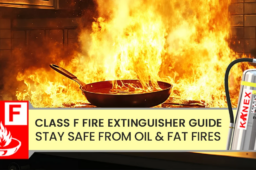What is a Fire Extinguisher? How It Works & When to Use it.
- January 27, 2021
A fire extinguisher is a portable fire-safety device designed to control or put out small fires by spraying an extinguishing agent that cools the flames, removes oxygen, or stops the fire’s chemical reaction.
In simple words, when a fire starts, a fire extinguisher helps stop it before it spreads out of control. Understanding what it is, how it works, and which type you should use can make the difference between a small accident and a major disaster.
Define Fire Extinguisher – Meaning Explained
According to safety standards, a fire extinguisher is a pressure vessel containing an agent (like water, foam, gas, or dry chemical powder) that, when released, suppresses fire by one or more of these methods:
- Cooling the burning material
- Smothering flames by cutting off oxygen
- Interrupting the fire’s chemical chain reaction
This makes it a crucial part of any building’s fire safety equipment.
How Does a Fire Extinguisher Work? (Working Principle)
Every extinguisher operates on the same basic principle: discharging a stored extinguishing agent under pressure through a nozzle to attack the fire.
Here’s how it works step-by-step:
- Pull the safety pin – this unlocks the handle.
- Aim the nozzle at the base of the fire.
- Squeeze the lever – this releases the extinguishing agent.
- Sweep side-to-side to cover the burning area.
Remember the P.A.S.S. method — Pull, Aim, Squeeze, Sweep.
The extinguishing agent can act by:
- Cooling (water or foam)
- Cutting oxygen (foam, CO₂)
- Breaking the chemical chain (dry chemical powders)
Types of Fire Extinguishers (and Their Uses)
Different fires require different extinguishing agents. Choosing the wrong type can be dangerous, especially around electricity or flammable liquids.
What Fire Extinguisher for What Type of Fire?
Choosing the right fire extinguisher depends on the fire source. Each extinguisher is designed for a specific fire class — such as Class A for paper and wood, or Class C for electrical fires. Use this guide to pick the correct extinguisher for your environment.
Below is a comparison of major fire extinguisher types and their recommended uses:
| Type | Class of Fire | Suitable For | Example Use |
|---|---|---|---|
| Water | Class A | Wood, paper, cloth | Offices, warehouses |
| Foam (AFFF) | Class A & B | Solid materials + flammable liquids | Garages, fuel stations |
| Dry Chemical (ABC Powder) | Class A, B & C | Multi-purpose (solid, liquid, electrical) | Homes, offices, factories |
| Carbon Dioxide (CO₂) | Class B & C | Electrical equipment, flammable liquids | Server rooms, labs |
| Wet Chemical | Class K / F | Cooking oils and fats | Commercial kitchens |
| Clean Agent / Water-Mist | Class A & C | Sensitive electronics | Data centers, hospitals |
| Dry Powder (Class D) | Class D | Combustible metals | Metal manufacturing units |
Fire Classes Explained
- Class A: Ordinary combustibles (wood, paper, cloth)
- Class B: Flammable liquids (petrol, oil, paint)
- Class C: Electrical fires
- Class D: Metal fires (magnesium, titanium)
- Class K/F: Cooking oils and fats
(Learn more on our Classes of Fire page.)
Which Fire Extinguisher is Safest for Home or Office?
For general safety, the ABC dry chemical extinguisher is considered the safest fire extinguisher because it covers the most common fire types — solid materials, flammable liquids, and electrical equipment.
Tips for choosing a safe fire extinguisher:
- Look for ABC-rated on the label.
- Place near exits for easy access.
- Avoid using water extinguishers on electrical or oil fires.
- In kitchens, prefer wet-chemical extinguishers for cooking oil fires.
- For server rooms, use CO₂ or clean-agent extinguishers to prevent damage to electronics.
Top Benefits of Fire Extinguishers

1. Control Fires Quickly
Studies show that fire extinguishers stop over 80% of small fires before they spread. Quick action can prevent a minor spark from becoming a full-scale fire emergency.
2. Save Lives
Using a fire extinguisher effectively can save lives, especially in crowded areas like offices, schools, and hospitals. Containing a fire early gives people time to evacuate safely.
3. Protect the Environment
Early fire suppression reduces the release of toxic gases and greenhouse emissions. It also conserves water that firefighters would otherwise use to douse large fires.
Fire Extinguisher Maintenance & Safety Tips
To ensure reliability, every extinguisher must be inspected and serviced regularly.
- Monthly visual check: gauge in green zone, pin intact, no damage.
- Annual servicing: by certified professionals.
- Hydrostatic testing: every 5–10 years (for high-pressure units).
- Placement: mount at visible points, near exits, and away from heat.
- Training: train staff on proper use (P.A.S.S. method).
Neglecting maintenance can make the extinguisher ineffective when you need it most.
Fire Prevention Tips
- Keep combustible materials away from heat sources.
- Regularly check electrical wiring for faults.
- Store flammable liquids in approved containers.
- Install smoke alarms and test them monthly.
- Keep exits and escape routes clear.
Following these simple fire prevention tips can drastically reduce risk.
Conclusion – Stay Safe with the Right Fire Extinguisher
Understanding what a fire extinguisher is, how it works, and which type fits your needs is the foundation of fire safety. For homes, offices, and industries, having the right safe fire extinguisher and maintaining it properly can save lives, property, and the environment. Kanex Fire offers certified, high-performance extinguishers and complete fire-safety solutions. Contact us today to choose the perfect extinguisher for your safety needs









